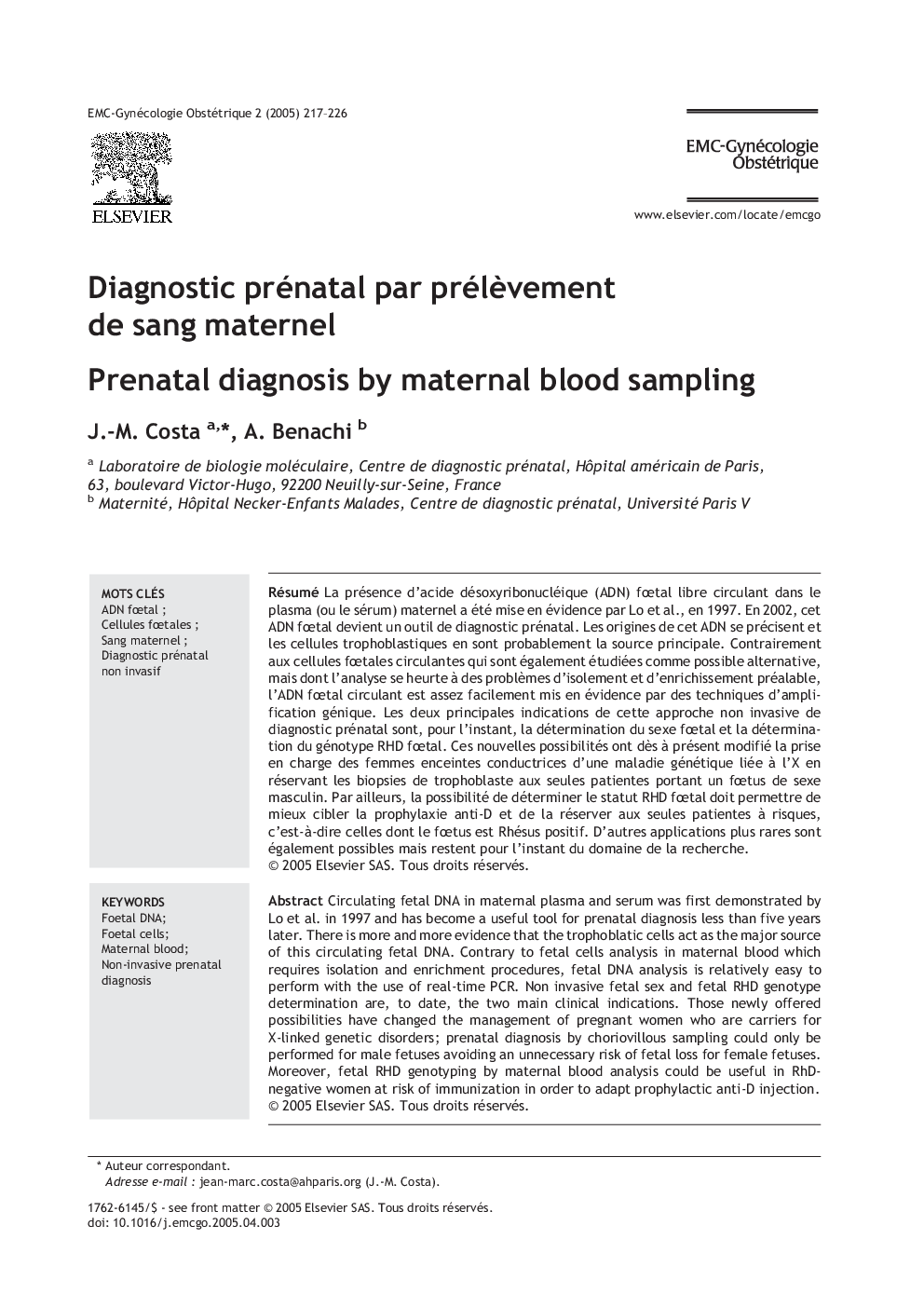| Article ID | Journal | Published Year | Pages | File Type |
|---|---|---|---|---|
| 9319296 | EMC - Gynécologie-Obstétrique | 2005 | 10 Pages |
Abstract
Circulating fetal DNA in maternal plasma and serum was first demonstrated by Lo et al. in 1997 and has become a useful tool for prenatal diagnosis less than five years later. There is more and more evidence that the trophoblatic cells act as the major source of this circulating fetal DNA. Contrary to fetal cells analysis in maternal blood which requires isolation and enrichment procedures, fetal DNA analysis is relatively easy to perform with the use of real-time PCR. Non invasive fetal sex and fetal RHD genotype determination are, to date, the two main clinical indications. Those newly offered possibilities have changed the management of pregnant women who are carriers for X-linked genetic disorders; prenatal diagnosis by choriovillous sampling could only be performed for male fetuses avoiding an unnecessary risk of fetal loss for female fetuses. Moreover, fetal RHD genotyping by maternal blood analysis could be useful in RhD-negative women at risk of immunization in order to adapt prophylactic anti-D injection.
Keywords
Related Topics
Health Sciences
Medicine and Dentistry
Obstetrics, Gynecology and Women's Health
Authors
J.-M. Costa, A. Benachi,
